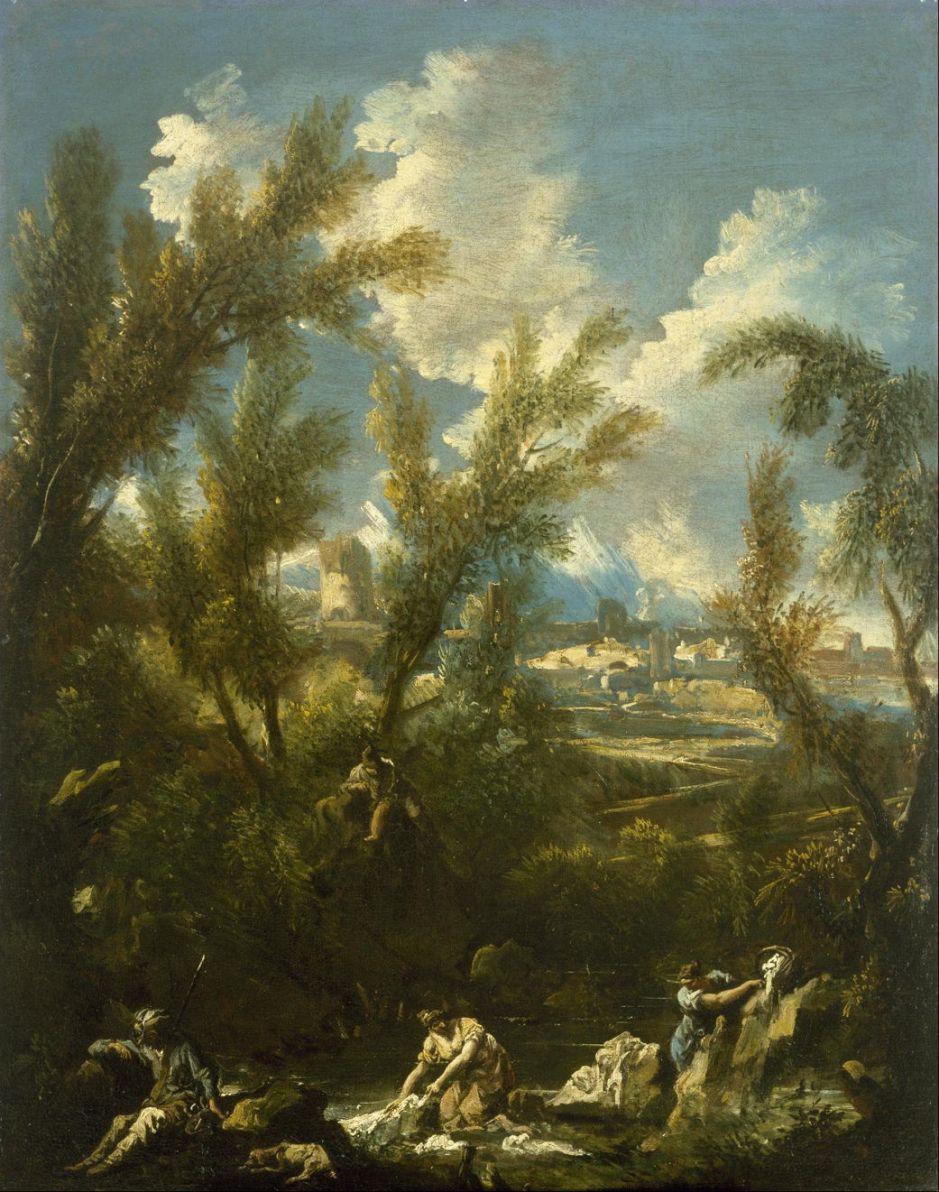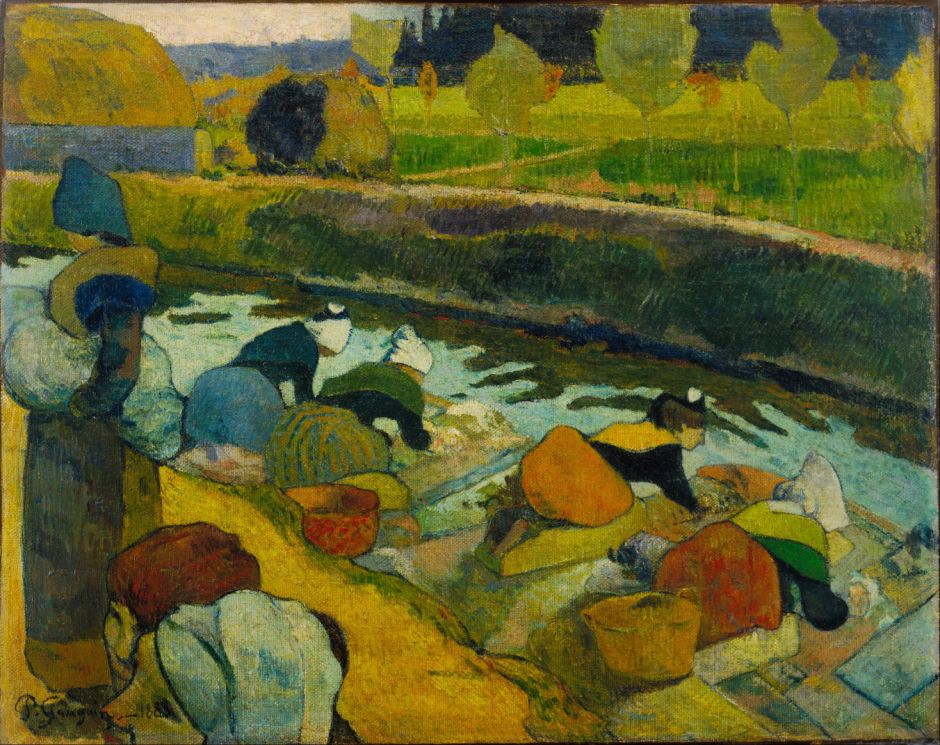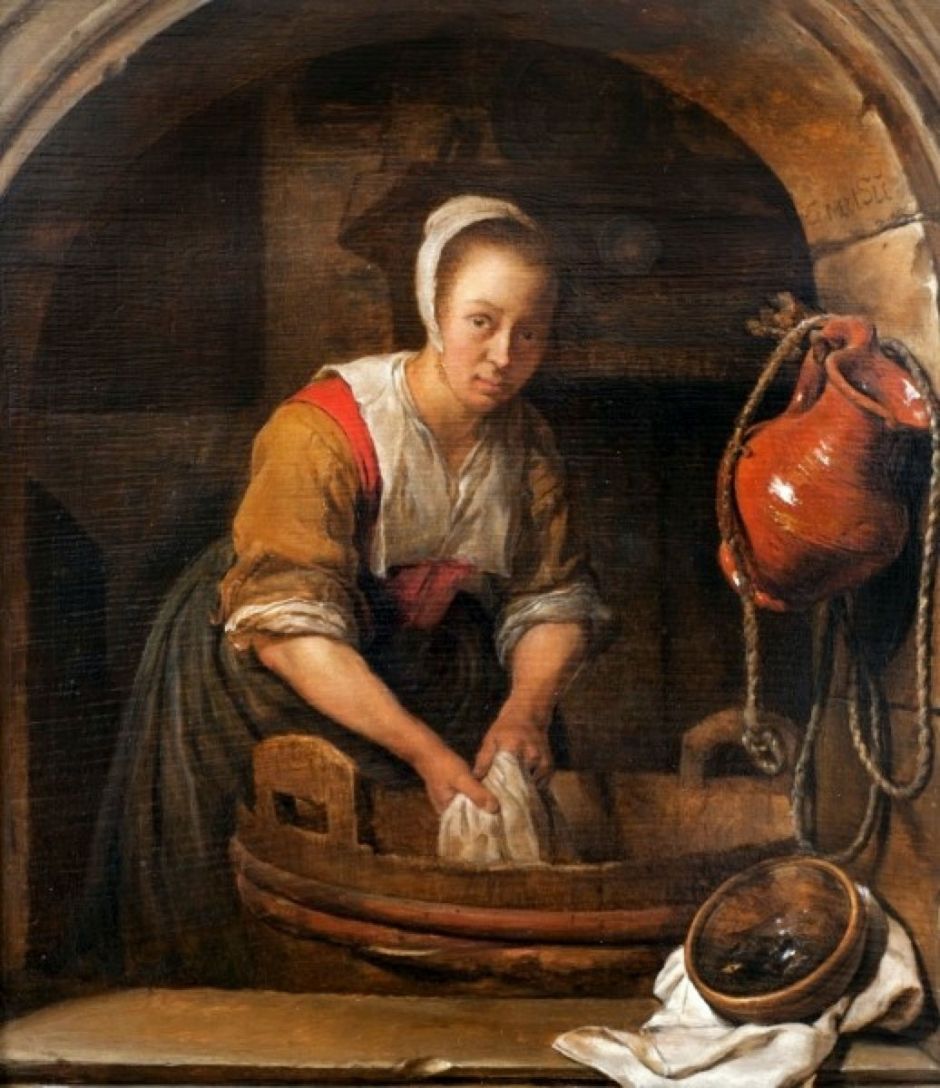Sometimes the most humble of everyday tasks turns out to have been important in the history of painting. This weekend I look at the role of washing clothes, today in the washing itself, and tomorrow in their subsequent drying. I’m not of course referring to the use of modern washing machines and all the convenience they bring, nor even to their wooden ancestors, but to the manual labour of all but the richest of women over the centuries.
If you’ve visited London’s National Gallery, you may have walked past one of its smallest but most significant paintings.

Thomas Jones’ tiny oil sketch of A Wall in Naples from about 1782 is one of the gems of the collection, as one of the first plein air oil sketches made in the late eighteenth century, a formative work for later British landscape painting and Impressionism. What brings its bright colour, what is hanging to dry outside that window, but someone’s washing.

The sight of women washing clothes was already not uncommon in paintings showing bodies of water, such as Alessandro Magnasco’s Landscape with Washerwomen from 1710-20.

On a grey day of showers in 1842, the major French landscape artist Eugène Isabey caught laundresses at work above The Town and Harbour of Dieppe.

During the nineteenth century, with the growth of towns and cities, washing the laundry became more organised, as shown in Martín Rico’s Washerwomen of Varenne (1865). A group of fifteen women, some with babies and children, are on the bank of the local river, most of them probably performing this as a commercial service, one of the few occupations open to women of the lower classes. For Rico they transform his landscape with their activity and the rhythm of their figures.

Although I cannot see any early paintings by Eugène Boudin which are as illustrative of this theme, later in his career he painted Washerwomen by the River (c 1880-85), above, and Laundresses on the Beach, Low Tide, Aval Cliff, Étretat (c 1890-94), below. The latter painting is remarkable for its rough facture, and for the number of women gathered by one of the most recognisable landmarks on the Normandy coast, the arch of Étretat.


Both Vincent van Gogh, in some of his paintings of the bridge of Langlois at Arles from 1888, and Paul Gauguin, in his Washerwomen of Arles I (1888), above, showed women hard at work washing the laundry.

Pierre-Auguste Renoir’s The Laundress (1891) sets a single, quite well-dressed woman doing her washing in one of his sumptuously soft-focus landscapes.

The Norwegian painter Jahn Ekenæs teaches us that, even in the bitter Nordic winters, the washing still had to be done: his Women Doing Laundry Through a Hole in the Ice (1891) seem to have the toughest job of all. Note that only one of the women is wearing anything on her hands.
This wasn’t an exclusively outdoor activity either, and there are many paintings of those toiling below stairs in the households of Europe.

Portraits of women washing linen first became popular in Dutch and Flemish ‘cabinet’ paintings, such as Gabriël Metsu’s Washerwoman (c 1650), along with other scenes of household and similar activities. This painting appears authentic and almost socially realist: the young woman appears to be a servant, dressed in her working clothes, with only her forearms bare, and her head covered.
She is in the dark and dingy lower levels of the house, and hanging up by her tub is a large earthenware vessel used to draw water. She looks tired, her eyes staring blankly at the viewer. Her expression is neutral, without any sign of a smile.

Against those, Jean-Baptiste Greuze’s The Laundress (1761) is something of a surprise. The young maid appears quite well-dressed but rather unkempt, and in clothes which don’t seem particularly intended for household work. She leans forward over a large earthenware bowl, washing smaller linen items in its soapy water.
She also looks at the viewer, a slight flirting smile on her face. Her left foot is in full view. Behind the bowl is a marabout, used for boiling water. Behind her is a large wooden cupboard, above which linen is drying on a line.
Greuze drops subtle hints that this young woman is provocative and flirtaceous, but hardly writes her off as a complete floozie. This was painted for Greuze’s patron, Ange-Laurent de La Live de Jully, when the artist was enjoying great success at the Salon. His reputation faded after 1780, and he lost everything in the French Revolution, dying a pauper.
Tomorrow I’ll return outdoors for drying.

